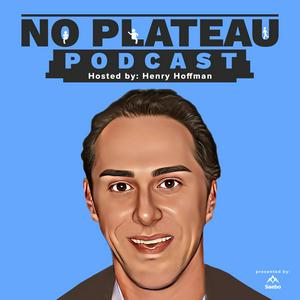The ABCs of ABT with Darci Pernoud
This week, we are talking about activity-based training, what it is, what the benefits are, and how this practice's guidelines and progress compares against stroke therapy and patients. Darci Pernoud is an OT going on 18 years and has immense experience working with spinal cord injury patients in her very own gym. This week on the No Plateau Podcast, she speaks with Henry about ABT, patient recovery, and current state of spinal injury treatment and technology.
“A great deal has changed from where we are today than where we were 20, 30, 40 years ago. There is much more incomplete injuries, more people walking. I think it has a lot to do with continued research, continued thought process, how to push people hard. It's a very hot topic. I feel like right now in the rehab world is higher intensity pushing people harder to help create that change and drive home that neuroplasticity.”
Darci wastes no time in emphasizing the importance of activity based training also known as ABT. The benefits of this therapy are numerous and the impact on patient recovery and healing is immense.
“And so, by applying activity based therapy principles, that includes our health and wellness exercise measures, it's getting our bone density where it needs to be. It's getting our cardiovascular training where it is, it's getting our muscles stronger for resistance training, which is going to help with posture. So, it's going to help people look better. The benefits of exercise, getting circulation, getting all the right hormones, the growth factors, everything on a cellular level is going to be improved. So people are going to feel better, Their mental health is going to be better. That's going to affect their quality of life.”
In This Episode
Darci Pernoud talks about her medical background (01:31)
What is spinal cord injury and what are some of the common impairments? (04:17)
Darci describing Activity Based Training in detail (10:56)
The five main pillars of Activity Based Training (13:26)
Was ABT in practice when she graduated in 2005? (16:17)
The current guidelines and care expectations in terms of standpoint of frequency, duration and time (19:13)
Comparing the treatment and care between spinal cord and stroke patients (22.55)
The average length of stay for a spinal cord patient (24:49)
What happens when patients are discharged from the hospital? (26:48)
The average onset post recovery for Independence Rehab clients (28:42)
Darci talks about ABT benefits and the recommended cardiovascular and resistance training (31:45)
How popular and accessible are ABT gyms? (38:39)
Discussing OT and PT equipment and technology (40:43)
The current state of progress for spinal cord patients potentially walking again (44:55)
Darci discusses the progress of one of her clients (46:04)
Thoughts of patients doing Activity Based Training virtually or remotely from home (48:20)
How people can reach Darci or learn more about ABT therapy (50:59)
Our Guest
Darci Pernoud has been an OT for over 18 years. She started out as a dual diagnosis therapist working in-patient rehab, and eventually went through a day program, an out-patient program, post-op work and upper extremity limb data collection work. She started networking with an activity based therapy gym which closed during Covid, prompting her to become a gym owner, trying to help the community’s experience of neurodiagnosis, assisting them in their recovery journey.
Resources & Links
Darci Pernoud on Linkedin
Back to Independence Rehab
Henry Hoffman on LinkedIn
Saebo
On YouTube
On Instagram
On LinkedIn
Saebo’s Stroke Caregiver Support Group
Saebo’s Stroke Survivor Support Group


